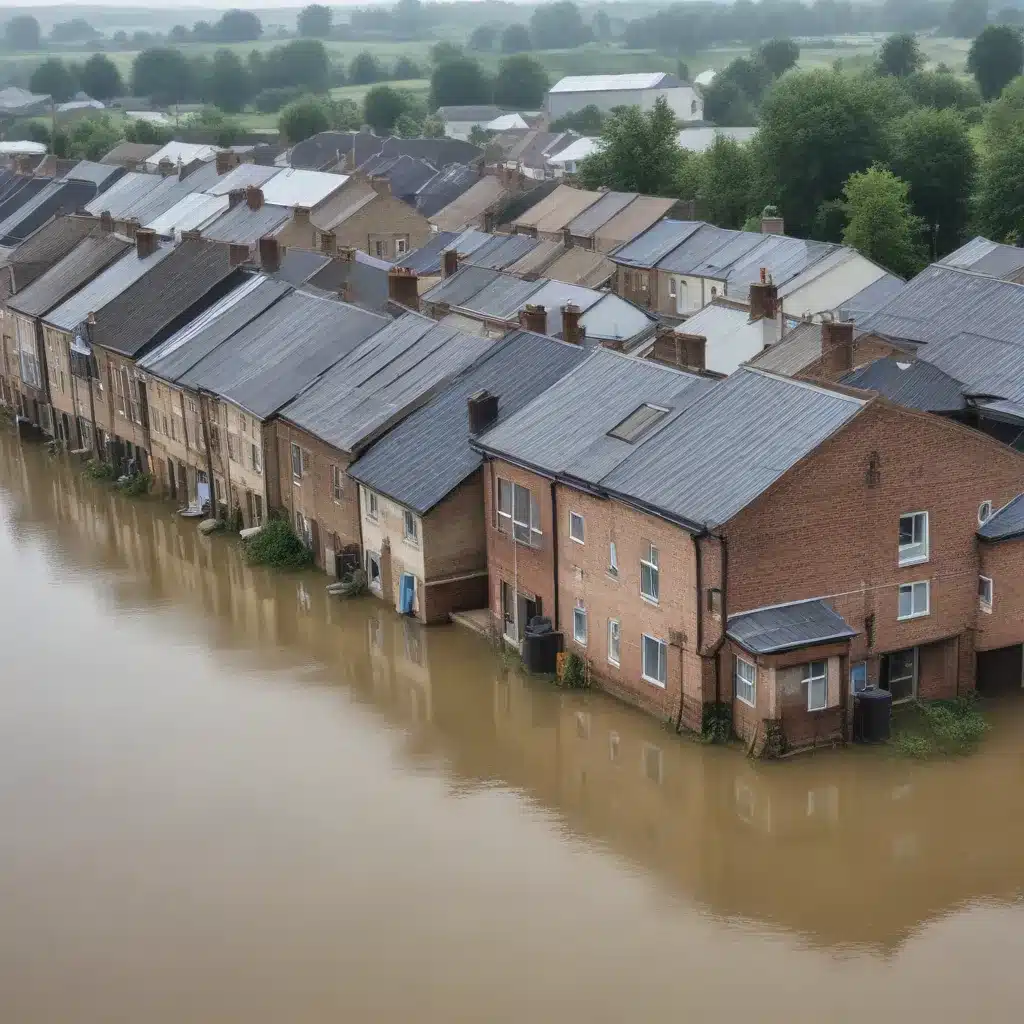
As an experienced water damage restoration specialist in Orlando, Florida, I’ve seen firsthand the devastating impact that natural disasters can have on businesses, particularly in the manufacturing sector. Floods, hurricanes, and other extreme weather events can cripple production facilities, disrupt supply chains, and lead to significant financial losses. That’s why I’m passionate about sharing my insights on how manufacturers can build flood resilience and ensure business continuity in the face of these challenges.
Understanding the Risks
Florida is no stranger to natural disasters, and the manufacturing industry is particularly vulnerable. Floods can cause extensive damage to equipment, raw materials, and finished products, leading to prolonged downtime and costly repairs. Hurricanes can rip roofs off buildings, send debris flying, and leave facilities submerged in water. Even smaller-scale storm events can overwhelm drainage systems and lead to localized flooding.
The consequences of these events can be severe. I’ve witnessed manufacturers lose millions of dollars in revenue, struggle to meet customer demand, and even face the prospect of permanent closure. But the good news is that there are steps businesses can take to mitigate these risks and emerge stronger from the aftermath.
Proactive Flood Preparedness
One of the most important things manufacturers can do is to develop a comprehensive flood preparedness plan. This should include a thorough risk assessment, identifying potential vulnerabilities in your facility, and implementing targeted mitigation strategies.
For example, you might consider elevating critical equipment and systems above the anticipated flood level, reinforcing building structures to withstand high winds and water pressure, or investing in backup power sources to maintain operations during a disruption. It’s also crucial to have clear emergency protocols in place, ensuring that employees know what to do in the event of a flood or other disaster.
Diversifying Supply Chains
Another key aspect of flood resilience is supply chain management. Relying on a single supplier or production facility can leave your business highly vulnerable to disruptions. By diversifying your supply chain, you can spread the risk and ensure that you have alternative sources of materials and components.
This might involve identifying backup suppliers in different geographic regions, maintaining strategic stockpiles of critical inventory, or exploring opportunities for domestic manufacturing to reduce dependence on overseas production. It’s also important to regularly review and test your supply chain contingency plans to ensure they remain effective.
Leveraging Insurance and Disaster Assistance
Of course, even the most comprehensive preparedness plan can’t eliminate the risk of damage entirely. That’s where insurance and disaster assistance programs come into play. Make sure you have adequate coverage for your facilities, equipment, and inventory, and familiarize yourself with the claims process to ensure a smooth recovery.
Additionally, explore government and non-profit disaster relief programs that may be available in your area. These can provide financial assistance, technical support, and other resources to help manufacturers bounce back from a flood or other natural disaster.
Investing in Restoration and Mitigation
When the unthinkable happens and your facility is impacted by a flood, it’s crucial to act quickly to minimize the damage and get your operations back up and running as soon as possible. That’s where water damage restoration specialists like myself come in.
We can help you assess the extent of the damage, develop a comprehensive remediation plan, and execute the necessary repairs and cleanup. This might involve extracting standing water, drying out affected areas, replacing damaged materials, and addressing any mold or other secondary issues.
But restoration is just the first step. To build true flood resilience, you’ll also need to invest in mitigation measures that can prevent or reduce the impact of future events. This could include upgrading your drainage systems, reinforcing your building’s envelope, or implementing flood-proofing technologies like smart sensors and automated shutoff valves.
Fostering a Culture of Preparedness
Finally, I can’t overstate the importance of cultivating a culture of preparedness within your organization. Ensure that all employees, from the C-suite to the factory floor, are aware of the risks and understand their roles in emergency response and recovery.
Provide regular training on disaster preparedness, conduct emergency drills, and encourage open communication about potential challenges and lessons learned. By empowering your team and making flood resilience a priority, you can build a more agile, adaptable, and resilient organization that can weather any storm.
Conclusion
Floods and other natural disasters pose a significant threat to the manufacturing sector, but with the right strategies and mindset, it’s possible to build flood resilience and ensure business continuity. By proactively addressing vulnerabilities, diversifying supply chains, leveraging insurance and disaster assistance, and investing in restoration and mitigation, you can protect your operations, safeguard your assets, and position your business for long-term success.
As an Orlando water damage restoration specialist, I’ve seen firsthand the devastating impact of floods, but I’ve also witnessed the incredible resilience and determination of manufacturers who have weathered these storms. By implementing the strategies I’ve outlined, you too can create a more secure, sustainable, and prosperous future for your business.
If you’d like to learn more about how Orlando Water Damage Restoration can support your flood preparedness and recovery efforts, I encourage you to reach out to our team. We’re here to help you navigate these challenges and emerge stronger than ever.

